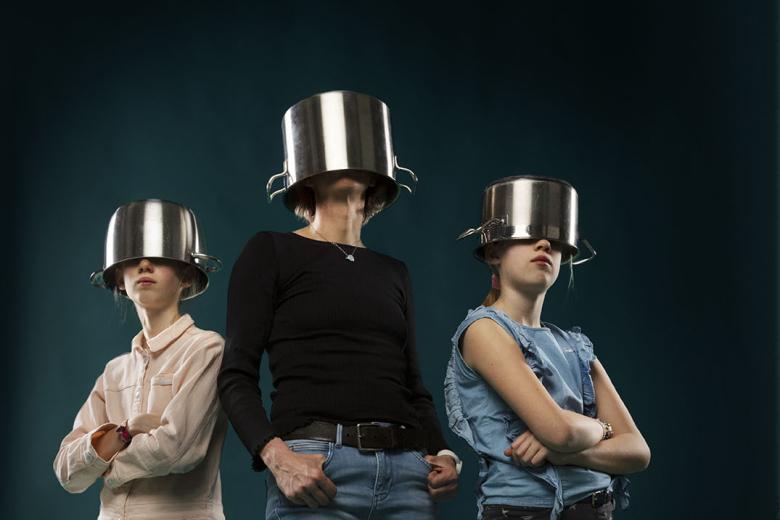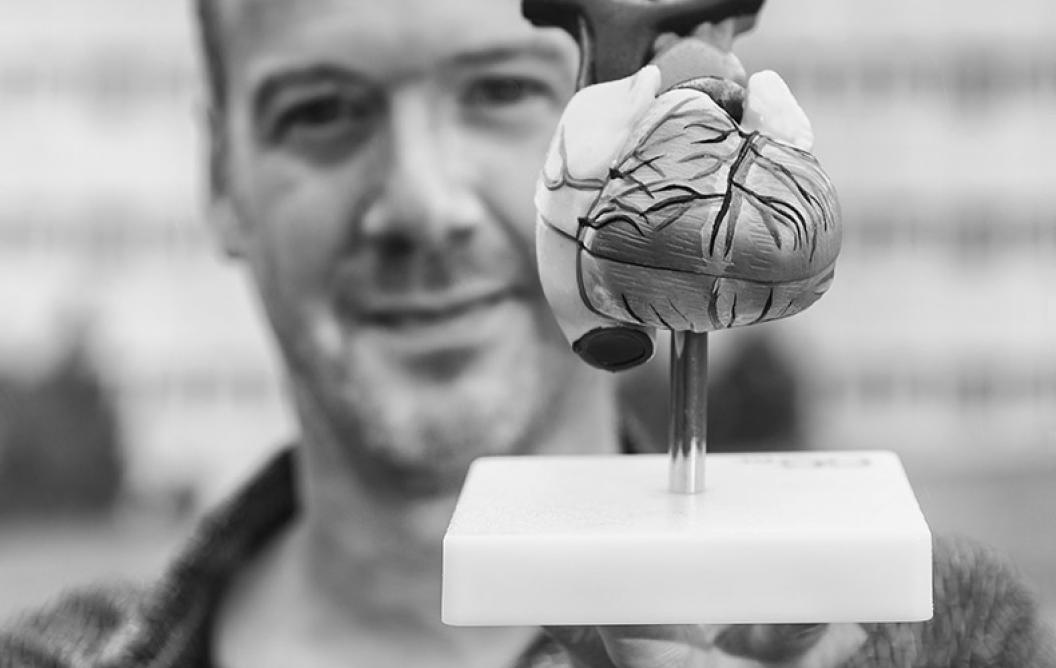Following his (donor) heart
Thanks to a heart transplant, Rogier Veltrop survived a life-threatening illness. The Maastricht University researcher wants to make the most of his ‘bonus years’ by contributing to a new treatment for cardiovascular disease.
“I woke up after my heart transplant in pain, but also in a state of disbelief. My body was in such a bad state, I was certain I wouldn’t survive the operation. I’d more or less said goodbye to my family, friends and the hospital staff. It was only when I was sure the operation was a success that disbelief gave way to relief. I’ve been given a second chance at life!”
Dreaded diagnosis
Veltrop has laminopathy, a genetic disorder that manifests in his case in severe heart problems. The disorder has already taken the lives of several family members. Veltrop seemed perfectly healthy—until he wasn’t. “I was young, fit, played competitive volleyball and wanted to go into science. I was doing my PhD in the US when I started to get tired quickly. Fatigue can be a sign of heart failure, so I came home to see the doctor, just to be sure.” After many referrals, he received the diagnosis he had been dreading.
After that, his health deteriorated rapidly. Veltrop struggled with ventricular disorders, atrial fibrillation and cardiac arrest. He looked death in the eye on more than one occasion. “At my worst, I could only walk 50 metres at a time. I couldn’t tie my own shoelaces. A heart transplant became my last hope.” In 2015, that hope became a reality. (Text continues below picture.)
Corona research
With his recovery going well, Veltrop was keen to continue his PhD. He was doing research on a subject that had little priority in the West: coronaviruses. “The first coronavirus, SARS, was mostly seen as ‘an Asian problem’. Some research had been done, but not on a large scale. One of the things I was looking into was how the virus penetrates a human cell. Among the researchers, there was a suspicion that a new coronavirus could also cause major problems outside Asia.”
Veltrop never completed his PhD on coronaviruses. After his heart transplant he was not allowed to continue; he had been out for too long. “I was told to do another master’s degree and start over elsewhere. At first I was mad, obviously. But ultimately it gave me the opportunity to learn more about cardiovascular disease, and to make a difference for my fellow patients.”
Blood cell to stem cell
Veltrop is a third-year PhD candidate at Uniklinik RWTH Aachen and the CARIM research group at Maastricht University. His interim results are promising. “With just a tube of blood from a patient, I can make personal stem cells and change them into custom-made beating heart cells. These heart cells provide new information about the patient, about cardiovascular disease and other abnormalities. In follow-up studies, my team and I will study ‘sick’ and ‘healthy’ heart cells to gain a better understanding of various disorders. We can also experiment on the cells with different treatments. We want to share all this knowledge with other researchers through a worldwide database.” (Text continues below picture.)
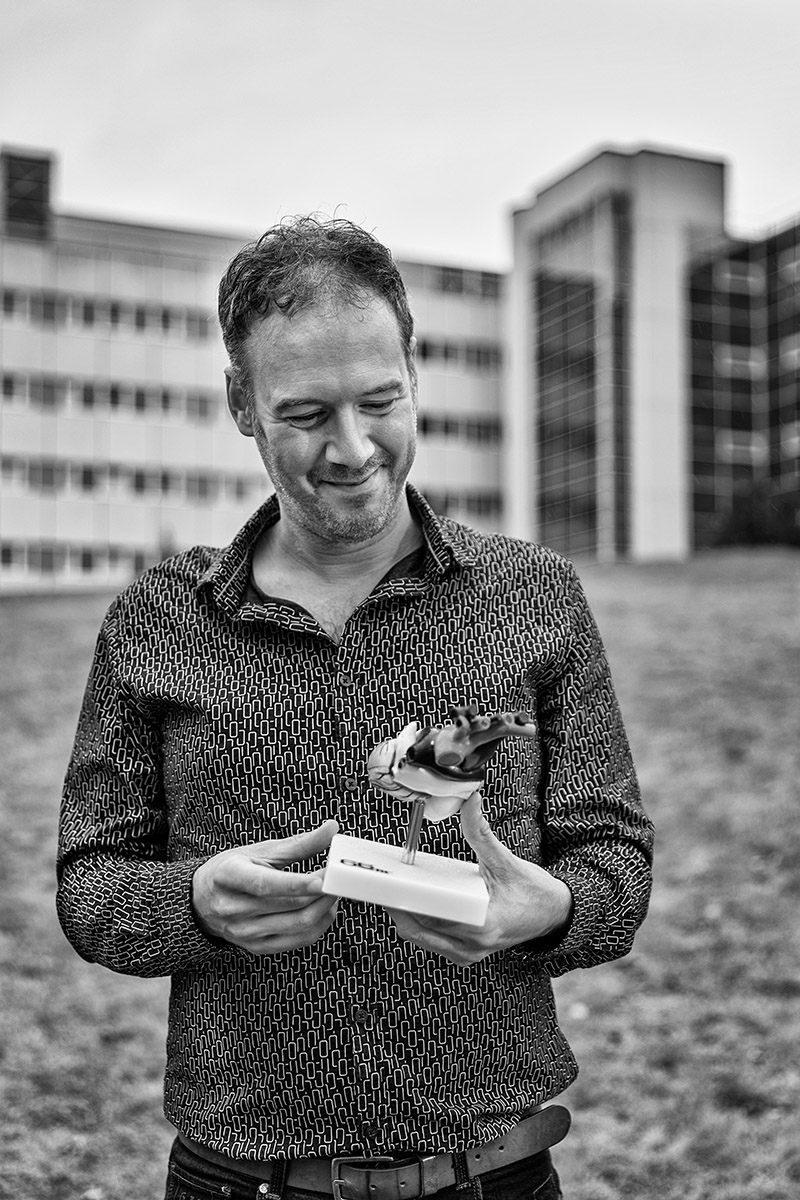
Breakthrough treatment
The heart cells from Veltrop’s doctoral research may also form the basis for a new treatment that actually cures cardiovascular disease. He explains enthusiastically: “We’re going to investigate whether cells can replace diseased and damaged parts of a heart. A surgeon would remove the heart from the body, repair it with new cells, and put it back in again.”
How groundbreaking is this approach? “Right now the best we can do is control the symptoms of cardiovascular disease, using blood thinners, antihypertensive drugs or even a donor heart. The new treatment would solve the problem entirely, while also being patient-specific and fast. And we can make other cells, too, for the liver, lungs and other organs, so we may be able to help even more people. In a decade or so, these types of treatments could be a reality.”
Limited life expectancy
A bittersweet accomplishment, because Veltrop himself may not be around to see it. People with a donor heart live on average for another 10 to 15 years. He recently celebrated the fifth anniversary of his transplant. “I’ve become more critical of how I use my time. I don’t have a bucket list, but I would like to become a professor in Maastricht. For the rest, I want to have fun—in my work, but also with volleyball, which I’ve taken up again through the Sport and Transplant Foundation. My team has been to the World Transplant Games twice and won a gold and a silver medal. I’d love to experience that again.”
This is a tense time for Veltrop. “I’m in the at-risk group, so I’m sticking closely to the measures despite the relaxations. In time, expect a kind of flu shot for corona will be developed in addition to a vaccine, which will reduce the number of seriously sick people and deaths and help us return to the ‘old normal’. Corona will be just another part of life, like colds and the flu. Whatever happens, I’m making the most of it. Life has taught me: live consciously, take care of your body, put things into perspective, don’t take anything for granted. And do as many things as possible that make your heart beat faster ...”
Also read
-
Empowering Smallholder Farmers in the Data Economy: Unlocking Opportunities and Overcoming Obstacles
Frederik Claasen, the head of policy at our partner organisation Solidaridad Network on the opportunities and obstacles facing smallholder farmers in their data ecosystems.
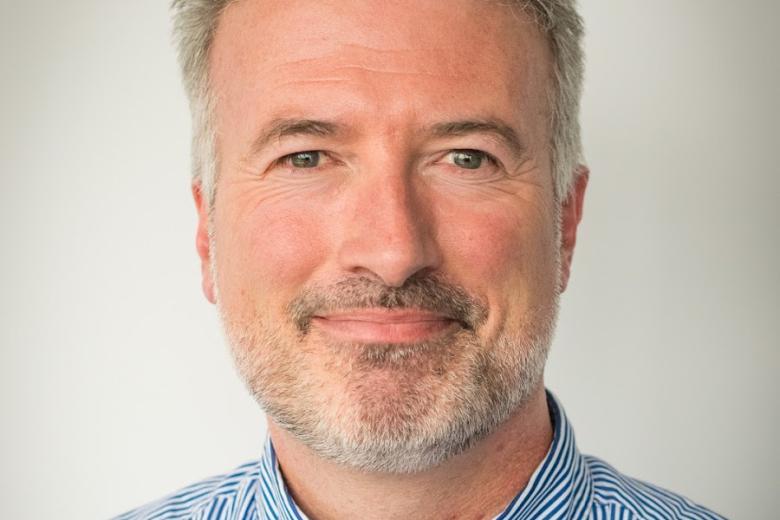
-
The last 'nerve doctor' in the Netherlands
Frans Verhey, professor of Geriatric Psychiatry and Neuropsychiatry is proud of what the Limburg Alzheimer’s Centre has achieved and of its team, which works tirelessly to improve the quality of life of people with Alzheimer’s. “Alzheimer’s tends to be seen as a horrible, deadly brain disease that...
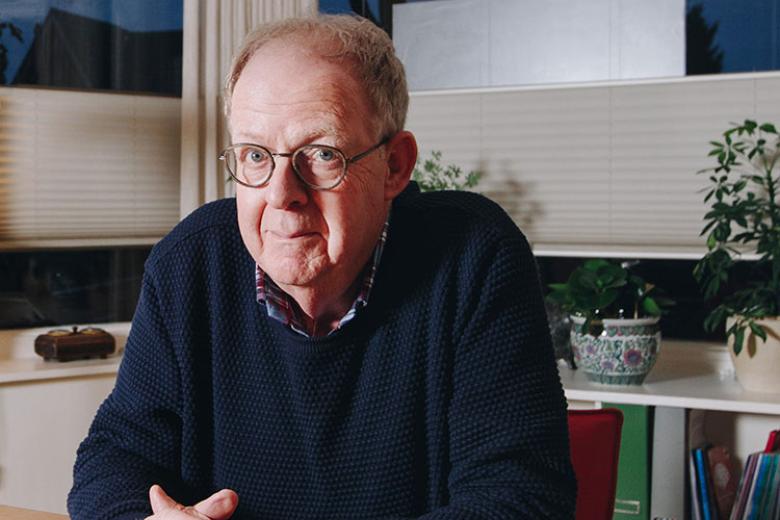
-
The scientist, the chef and her passions
Anne Roefs was awarded a Vici grant of €1.5 million. The professor of Psychology and Neuroscience of Abnormal Eating, was tossing up between a career as a scientist or a top chef.
